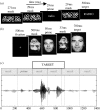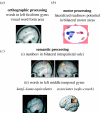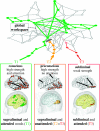Levels of processing during non-conscious perception: a critical review of visual masking
- PMID: 17403642
- PMCID: PMC2430002
- DOI: 10.1098/rstb.2007.2093
Levels of processing during non-conscious perception: a critical review of visual masking
Abstract
Understanding the extent and limits of non-conscious processing is an important step on the road to a thorough understanding of the cognitive and cerebral correlates of conscious perception. In this article, we present a critical review of research on subliminal perception during masking and other related experimental conditions. Although initially controversial, the possibility that a broad variety of processes can be activated by a non-reportable stimulus is now well established. Behavioural findings of subliminal priming indicate that a masked word or digit can have an influence on perceptual, lexical and semantic levels, while neuroimaging directly visualizes the brain activation that it evokes in several cortical areas. This activation is often attenuated under subliminal presentation conditions compared to consciously reportable conditions, but there are sufficiently many exceptions, in paradigms such as the attentional blink, to indicate that high activation, per se, is not a sufficient condition for conscious access to occur. We conclude by arguing that for a stimulus to reach consciousness, two factors are jointly needed: (i) the input stimulus must have enough strength (which can be prevented by masking) and (ii) it must receive top-down attention (which can be prevented by drawing attention to another stimulus or task). This view leads to a distinction between two types of non-conscious processes, which we call subliminal and preconscious. According to us, maintaining this distinction is essential in order to make sense of the growing neuroimaging data on the neural correlates of consciousness.
Figures



Similar articles
-
Do conscious perception and unconscious processing rely on independent mechanisms? A meta-contrast study.Conscious Cogn. 2014 Feb;24:22-32. doi: 10.1016/j.concog.2013.12.006. Epub 2014 Jan 4. Conscious Cogn. 2014. PMID: 24398259
-
Unconscious vision and executive control: how unconscious processing and conscious action control interact.Conscious Cogn. 2014 Jul;27:268-87. doi: 10.1016/j.concog.2014.05.009. Epub 2014 Jun 22. Conscious Cogn. 2014. PMID: 24960432 Review.
-
Non-conscious word processing in a mirror-masking paradigm causing attentional distraction: an ERP-study.Conscious Cogn. 2012 Mar;21(1):353-65. doi: 10.1016/j.concog.2012.01.005. Epub 2012 Jan 30. Conscious Cogn. 2012. PMID: 22289507
-
Boundary conditions for the influence of unfamiliar non-target primes in unconscious evaluative priming: The moderating role of attentional task sets.Conscious Cogn. 2015 Sep;35:342-56. doi: 10.1016/j.concog.2015.01.010. Epub 2015 Feb 10. Conscious Cogn. 2015. PMID: 25680827
-
Subliminal emotion perception in brain imaging: findings, issues, and recommendations.Prog Brain Res. 2006;156:105-21. doi: 10.1016/S0079-6123(06)56006-6. Prog Brain Res. 2006. PMID: 17015077 Review.
Cited by
-
Strongly masked content retained in memory made accessible through repetition.Sci Rep. 2021 May 13;11(1):10284. doi: 10.1038/s41598-021-89512-w. Sci Rep. 2021. PMID: 33986370 Free PMC article.
-
Pharmacological modulation of subliminal learning in Parkinson's and Tourette's syndromes.Proc Natl Acad Sci U S A. 2009 Nov 10;106(45):19179-84. doi: 10.1073/pnas.0904035106. Epub 2009 Oct 22. Proc Natl Acad Sci U S A. 2009. PMID: 19850878 Free PMC article.
-
Can the meaning of multiple words be integrated unconsciously?Philos Trans R Soc Lond B Biol Sci. 2014 Mar 17;369(1641):20130212. doi: 10.1098/rstb.2013.0212. Print 2014 May 5. Philos Trans R Soc Lond B Biol Sci. 2014. PMID: 24639583 Free PMC article.
-
Is there any electrophysiological evidence for subliminal error processing?Front Neurosci. 2013 Aug 29;7:150. doi: 10.3389/fnins.2013.00150. Front Neurosci. 2013. PMID: 24009548 Free PMC article. Review.
-
Converging intracranial markers of conscious access.PLoS Biol. 2009 Mar 17;7(3):e61. doi: 10.1371/journal.pbio.1000061. PLoS Biol. 2009. PMID: 19296722 Free PMC article.
References
-
- Abrams R.L, Greenwald A.G. Parts outweigh the whole (word) in unconscious analysis of meaning. Psychol. Sci. 2000;11:118–124. doi:10.1111/1467-9280.00226 - DOI - PubMed
-
- Abrams R.L, Klinger M.R, Greenwald A.G. Subliminal words activate semantic categories (not automated motor responses) Psychon. Bull. Rev. 2002;9:100–106. - PubMed
-
- Adams J.K. Laboratory studies of behavior without awareness. Psychol. Bull. 1957;54:383–405. doi:10.1037/h0043350 - DOI - PubMed
-
- Allport A. On knowing the meaning of words we are unable to report: the effects of visual masking. In: Dornic D.S, editor. Attention and performance. vol. 6. Academic Press; London, UK: 1977. pp. 505–534.
-
- Audet T, Bub D, Lecours A.R. Visual neglect and left-sided context effects. Brain Cogn. 1991;16:11–28. doi:10.1016/0278-2626(91)90082-J - DOI - PubMed
Publication types
MeSH terms
LinkOut - more resources
Full Text Sources
Miscellaneous

